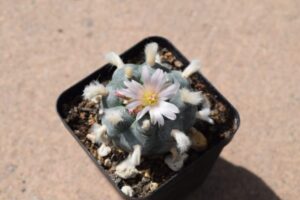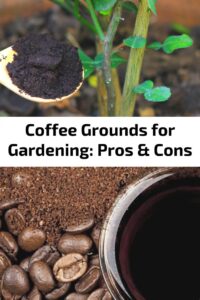The exquisite art of crafting hypertufa pots has captivated gardeners and horticulturists alike, offering them a blend of creativity and functionality. These unique containers, reminiscent of ancient stone pots yet lightweight and porous, provide an evocative focal point in any garden. As more individuals embark on the transformative journey of gardening, understanding how to make a hypertufa pot becomes not just an endeavor, but a delightful exploration into a captivating blend of art and nature.
The fascination with hypertufa lies not solely in its aesthetic appeal but in its intriguing composition. A combination of materials yields pots that mimic the weathered look of natural stone while being adaptable to various planting needs. In this guide, the process of creating these delightful containers will be demystified, presenting not just a how-to, but an invitation to immerse oneself in a tactile experience that breathes life into any garden space.
Let us embark on this journey of crafting beautiful hypertufa containers, beginning by delving into the essential materials and tools needed for this worthwhile undertaking.
Essentials for Crafting: Materials and Tools Needed
Before one can weave the enchantment of hypertufa pots into the garden, it is crucial to gather the necessary materials. The primary ingredients include equal parts peat moss, perlite or vermiculite, and Portland cement. Each ingredient plays a pivotal role in ensuring the final product is both durable and aesthetically pleasing. Peat moss provides organic matter, which enhances the pot’s structure, while perlite or vermiculite offers drainage. The Portland cement binds everything together, creating a sturdy yet lightweight composition.
In addition to these materials, a few essential tools must be procured. A mixing container and a trowel are vital for combining ingredients, while gloves protect hands from the cement. A mold, whether a plastic container or a specially designed hypertufa mold, will determine the shape of the final creation, adding both function and flair. Furthermore, a spray bottle filled with water is beneficial for misting the pots during the curing phase to prevent excessive drying.
Combining Materials: The Art of Mixture
The crafting of hypertufa pots begins with the meticulous blending of materials. In a large mixing container, combine two parts peat moss, one part perlite, and one part Portland cement. The visual contrast between these ingredients may evoke a sense of artistic delight. Mix them thoroughly until they display a uniform texture, reminiscent of coarse damp sand. Gradually add water until the mixture attains a consistency akin to thick oatmeal. This stage is critical; too much water can lead to a weak structure, while too little can result in a crumbling mess.
Once the mixture is adequately prepared, transfer it into the chosen mold. Pack it firmly to eliminate air pockets, which could compromise the integrity of the pot. The thickness of the walls is a crucial consideration; typically, a wall thickness of at least one inch ensures durability while still maintaining the lightweight quality of hypertufa.
Shaping and Finishing Touches: Crafting Unique Designs
As the hypertufa mixture is shaped within the mold, the creative aspects of this project come to the forefront. Before the mixture cures completely, individual touches can be applied. Adding texture through stamping or carving can transform a plain pot into a piece of art, enabling it to harmoniously blend with or stand out against surrounding plants. Some may opt to create patterns, while others might prefer a rustic, weathered finish that embodies the charm of ancient pottery.
Once the desired shape is achieved, it is imperative to allow the pot to cure. This process usually spans 24 to 48 hours, depending on environmental conditions. After the initial curing in the mold, gently remove the pot and allow it to dry in a shaded, well-ventilated area. It’s important to keep the pot moist during this period, misting it regularly to facilitate a slow and even curing process. This step is essential for ensuring that the pot maintains its integrity and does not crack.
Diversity in Use: Benefits of Hypertufa Pots
As the previously barren container undergoes its transformative journey, the benefits of utilizing hypertufa pots in gardening become increasingly apparent. These containers are not only visually appealing but also exhibit excellent drainage, making them ideal for succulent plants and other drought-tolerant species. The porous nature of hypertufa allows roots to breathe, safeguarding plants against overwatering—a common pitfall in container gardening.
Moreover, hypertufa pots can easily be manipulated into various sizes and shapes, accommodating a myriad of plants. This flexibility lends itself to both individual plant showcases as well as elaborate arrangements. The unique aesthetic of hypertufa complements the organic beauty of foliage, while its durability ensures that these pots can withstand the elements, often lasting for many seasons.
Lastly, the act of crafting hypertufa pots is not just a means of creating practical plant containers; it is a therapeutic experience that reconnects individuals with nature. The tactile engagement in mixing and molding is meditative, fostering a sense of accomplishment that extends beyond the act itself. In creating a hypertufa pot, one does not merely craft a container; one paves the way for new growth, both in the garden and in one’s personal connection to nature.
Embracing the artistry and practical benefits of hypertufa pots opens a door to a unique gardening experience. This DIY guide contributes to that pursuit, encouraging enthusiasts to immerse themselves in the delightful synthesis of creativity and horticulture. With each pot crafted, the garden flourishes, reflecting not merely a space of plants, but a rich tapestry of patience and passion.




Leave a Comment